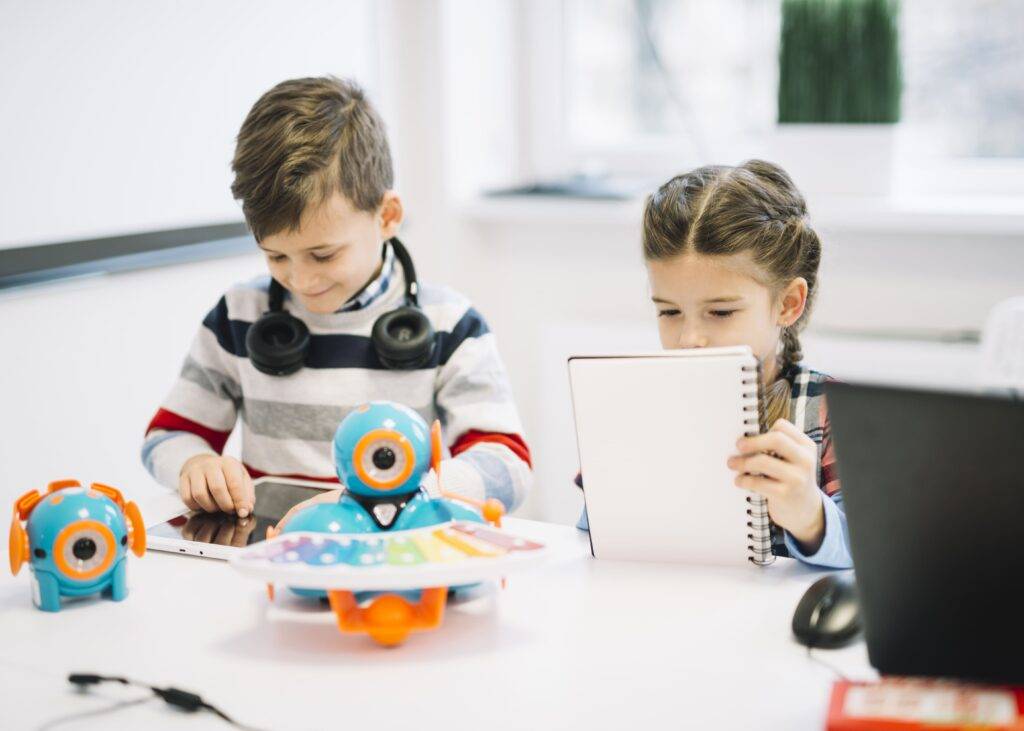In today’s digital age, technology is an ever-present aspect of our lives, shaping how we communicate, learn, and interact with the world around us. This influence extends to early childhood education, where the integration of technology has become a topic of discussion among parents, educators, and researchers alike. The key question emerges: How can we strike a balance between harnessing the benefits of technology and ensuring that young children’s development is holistic and healthy?
Embracing the Digital Landscape
Technology in early childhood education offers a myriad of benefits, from enhancing learning experiences to preparing children for a technology-driven future. Educational apps, interactive learning games, and digital storytelling platforms can engage children in ways that traditional methods may not.
1. Interactive Learning Tools:
- Educational apps and software designed for young children can introduce concepts such as numbers, letters, shapes, and colors in a fun and interactive manner.
- These tools often incorporate elements of play, encouraging active engagement and fostering a love for learning from an early age.
2. Multimedia Learning:
- Digital platforms can provide access to a wide range of multimedia resources, including videos, music, and animations, which can enhance comprehension and retention of information.
- Visual and auditory learning experiences can cater to different learning styles, making learning more accessible and engaging for diverse groups of children.
3. Virtual Field Trips:
- Technology allows children to embark on virtual field trips to museums, zoos, and historical sites, expanding their horizons and exposing them to new cultures and experiences.
- These virtual excursions can spark curiosity, encourage exploration, and supplement classroom learning in a dynamic way.
Finding the Right Balance
While the advantages of technology in early childhood education are clear, it is equally important to approach its integration with caution and mindfulness. Finding the right balance involves considering several crucial factors:
1. Screen Time Limits:
- The American Academy of Pediatrics recommends that children aged 2 to 5 years should have no more than one hour of screen time per day.
- Setting clear limits on screen time ensures that children have ample opportunities for physical activity, imaginative play, and social interaction, which are essential for their development.
2. Quality Content Selection:
- Parents and educators should carefully curate the digital content that children interact with, ensuring that it aligns with educational objectives and is age-appropriate.
- Choosing apps, games, and videos that are interactive, engaging, and educational can maximize the benefits of technology use.
3. Balancing Digital and Hands-On Activities:
- Technology should complement, not replace, hands-on learning experiences that involve sensory exploration, creative expression, and problem-solving.
- Incorporating a variety of activities, including outdoor play, art projects, and group games, ensures a well-rounded educational experience.
4. Parental Involvement and Monitoring:
- Parents play a crucial role in monitoring their child’s technology use and guiding them towards positive and educational content.
- Engaging in joint activities, such as using educational apps together or discussing digital stories, fosters bonding and allows parents to be actively involved in their child’s learning journey.
Conclusion
In the landscape of early childhood education, technology can serve as a powerful tool for enhancing learning and preparing children for the digital world they will inhabit. However, it is vital to approach its integration thoughtfully, with a focus on finding the balance that promotes holistic development.
By embracing quality digital content, setting screen time limits, prioritizing hands-on learning experiences, and encouraging parental involvement, we can create an educational environment where technology serves as a valuable ally in nurturing young minds.
Finding this equilibrium ensures that children reap the benefits of technology while also fostering their cognitive, social, emotional, and physical growth in a well-rounded manner. As we navigate this digital age, let us strive to harness the potential of technology in early childhood education, always mindful of the importance of balance and moderation.

